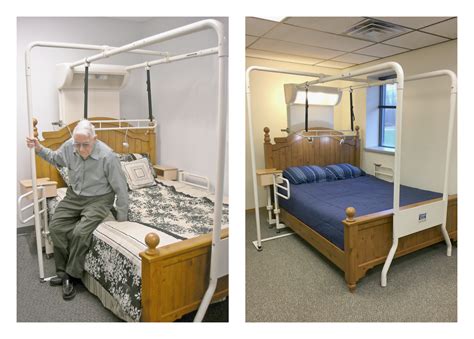How to Safely Transfer a Parkinson's Patient: A Comprehensive Guide
Transferring a Parkinson's patient requires careful planning and execution to ensure both their safety and comfort. Parkinson's disease can cause a range of motor challenges, including tremors, rigidity, balance problems, and slow movement (bradykinesia), making transfers potentially hazardous. This guide provides practical strategies for safe and effective patient transfers.
Understanding the Challenges
Before discussing transfer techniques, it's crucial to understand the specific challenges Parkinson's presents:
- Tremors: Involuntary shaking can make it difficult for the patient to maintain a stable posture during a transfer.
- Rigidity: Stiffness in muscles can restrict movement and make it harder to initiate and complete a transfer.
- Balance Problems: Impaired balance significantly increases the risk of falls during transfers.
- Bradykinesia: Slow movement can prolong the transfer process, increasing fatigue and the risk of injury for both the patient and caregiver.
- Freezing Episodes: Sudden freezing of gait can occur unexpectedly, making a transfer impossible without assistance.
Essential Preparations for Safe Transfers
Prior to initiating any transfer, ensure these crucial steps are taken:
- Assess the Patient's Capabilities: Evaluate the patient's strength, balance, and coordination. Understand their current level of mobility and any specific limitations.
- Choose the Right Equipment: Depending on the patient's abilities, you may need a transfer board, gait belt, sliding board, or other assistive devices. Make sure this equipment is readily available and in good working order.
- Clear the Area: Remove any obstacles or clutter that could cause a fall. Ensure the transfer path is clear and free of tripping hazards.
- Get Assistance if Needed: Don't hesitate to ask for help if the patient requires more assistance than you can safely provide. Two people are often safer than one, especially with heavier patients.
- Communicate Clearly: Explain each step of the transfer process to the patient clearly and calmly, providing reassurance and encouraging their participation as much as possible.
Safe Transfer Techniques
Different transfer methods suit various levels of patient mobility. Here are some common techniques:
1. Stand-Pivot Transfer
This method is suitable for patients who can partially bear weight on their legs.
- Positioning: Position yourself close to the patient, ensuring a stable base. Use a gait belt to support the patient's waist.
- Lifting: Encourage the patient to stand, using your body weight to assist them. Keep your back straight to avoid injury.
- Turning: Pivot the patient smoothly towards the target location (e.g., chair, toilet).
- Lowering: Gently guide the patient to a seated position, ensuring they sit comfortably and securely.
2. Assisted Standing Pivot Transfer
This is used for patients with weaker leg strength.
- Positioning: Position yourself close to the patient with good posture. Use a gait belt for support.
- Support: Place one arm under the patient’s armpits, and the other arm across their back for support.
- Lifting: Support the patient's weight as they slowly rise using their legs and your assistance.
- Turning: Carefully pivot them towards the target surface.
- Lowering: Gently lower the patient into the desired location.
3. Sliding Board Transfer
This is ideal for patients with limited mobility and no ability to bear weight.
- Positioning: Place the sliding board strategically between the surfaces (bed and chair).
- Transfer: Guide the patient slowly onto the board, ensuring proper alignment.
- Sliding: Carefully slide the patient from one surface to the other using controlled movements.
4. Hoyer Lift Transfer (Mechanical Lift)
For patients with severely limited mobility, a Hoyer lift is a safe and effective option. This requires specialized training.
Post-Transfer Care
After the transfer is complete:
- Check for Comfort: Ensure the patient is comfortable and securely positioned in their new location.
- Monitor for Pain or Discomfort: Pay attention to any signs of pain or discomfort and provide appropriate support.
- Document the Transfer: Record details of the transfer, noting any difficulties or concerns.
Remember, safety is paramount. Prioritize the patient's well-being and seek professional guidance if unsure about any aspect of the transfer process. Regular training and familiarization with various transfer techniques are essential for caregivers. Consulting with a physical therapist can provide personalized recommendations based on the patient’s specific needs and condition.
